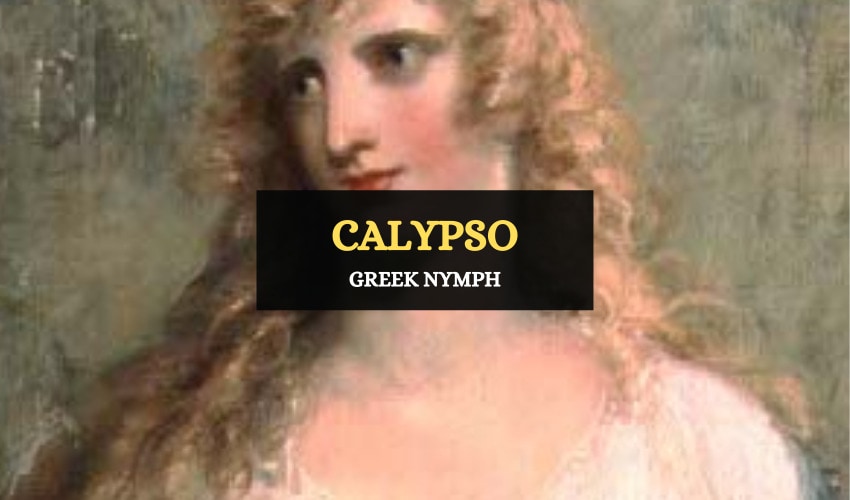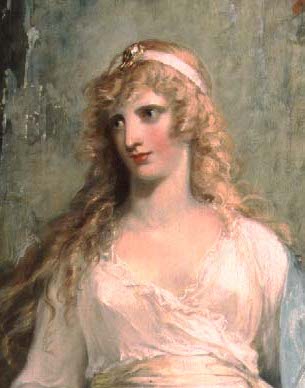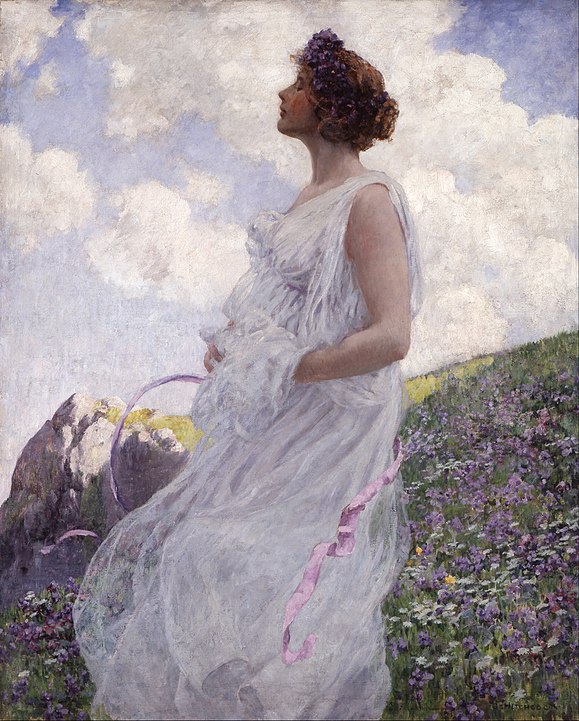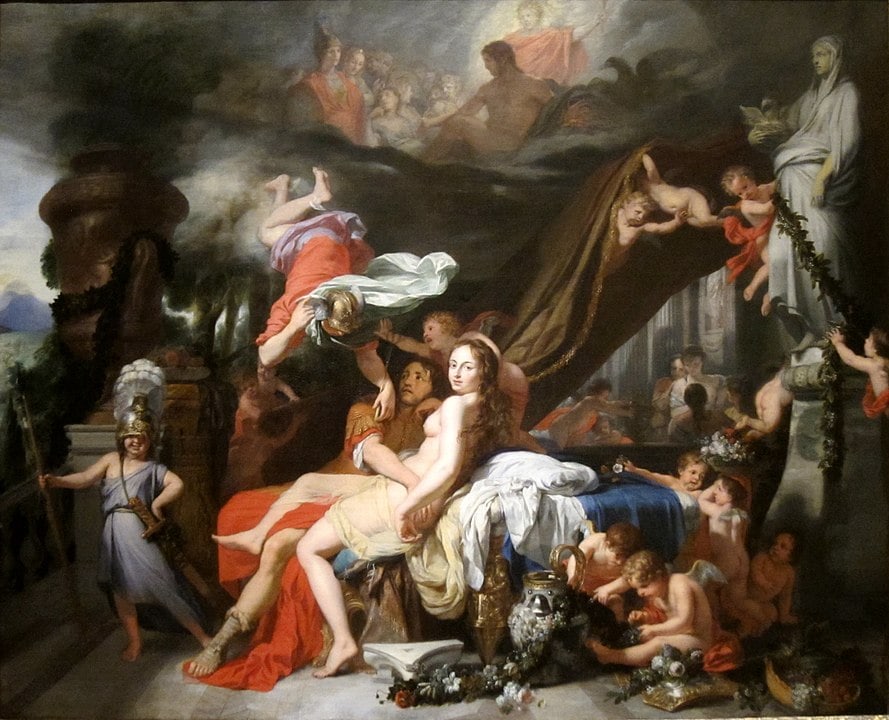
Table of Contents
Perhaps most renowned for her involvement with Odysseus in Homer’s epic the Odyssey, the nymph Calypso often evokes mixed feelings in Greek mythology. Calypso – devious or lovingly devoted? You might just have to decide for yourself.
Who Was Calypso?
Calypso was a nymph. In Greek mythology, Nymphs were minor deities who were inferior to the more well-known goddesses like Hera and Athena. They were commonly depicted as gorgeous maidens who symbolized fertility and growth. Nymphs were almost always linked to a specific location or natural thing.

In Calypso’s case, the natural link was an island named Ogygia. Calypso was the daughter of the Titan god Atlas. Depending on which Greek texts you read, two different women are cited as being her mother. Some claim it was the Titan goddess Tethys while others name Pleione, an Oceanid nymph, as her mother. It is important to note that both Tethys and Pleione were associated with water. This association along with the fact that Calypso, in ancient Greek, means to hide or conceal, forms Calypso’s backstory and strongly influences her behavior on the secluded island of Ogygia with Odysseus.
Calypso was believed not to be reclusive by choice but instead lived alone on Ogygia as punishment, likely for supporting her father, a Titan, during their battle with the Olympians. As a minor deity, Calypso and her fellow nymphs weren’t immortal, but they did live an exceptionally long time. They usually had the best interests of the human population at heart, though they stirred up trouble from time to time.
Calypso was often thought of as beautiful and seductive, common features of nymphs. She was also believed to be extremely lonely, as she was abandoned on an isolated island. Unfortunately, it was this set of circumstances that would come to define her in Greek mythology.

Symbols Associated with Calypso
Calypso was typically represented by two symbols.
- Dolphin: In Greek mythology, dolphins were associated with a few different things; the most prominent being assistance and good luck. Many Greeks believed that dolphins saved humans from a watery grave when they were drowning. Additionally, they were thought to be the only creatures able to love a man and not expect anything in return. In the Odyssey, Calypso indeed saves Odysseus from the sea, which is possibly why she is portrayed with the symbol of a dolphin.
- Crab: The second common representation of Calypso is the crab. Crabs typically represent loyalty in Greek mythology because of the giant crab sent by Hera who helped in defeating the Hydra. Scholars also speculate that Calypso could have been symbolized by a crab due to her desire to cling and hold onto Odysseus and not let him go.
Attributes of Calypso
Nymphs didn’t have the same power that the Greeks believed their gods possessed. However, they were able to control or manipulate their domain to some extent. Being an ocean nymph, Calypso was thought to have the ability to govern the sea and waves.
She was often depicted as being moody and fickle, as evidenced by unpredictable storms and waves. Sea goers pointed to her temper when the tides suddenly turned on them.
Calypso, like other ocean-related maidens, was believed to have an alluring voice which she coupled with her proclivity for music when luring in men, much like the Sirens.
Calypso and Odysseus
Calypso plays an important role in Homer’s Odyssey, entrapping Odysseus on her island for seven years. After losing all of his crew and his ship while returning from Troy, Odysseus drifted in the open water for nine days before coming upon Ogygia.
Calypso instantly became enamored with him, desiring to keep him on the island likely forever. Odysseus, on the other hand, was very much dedicated to his wife Penelope. Calypso didn’t give up though, eventually seducing him. Upon which Odysseus became her lover.
For seven years they lived on the island as a couple. Hesiod, the Greek poet, even described an awe-inspiring cave dwelling they shared. This cave was also home to their alleged two children Nausithous and Nausinous, and possibly a third named Latinus (depending on which source you believe).
It isn’t clear if Odysseus was under some sort of trance or went along with the arrangement willingly, but at the seven-year mark, he began to fiercely miss his wife Penelope. Calypso tried to keep him content on the island with her by promising him immortality, but it did not work. Greek texts describe Odysseus staring longingly at the sea, weeping for his human wife, every day from sunup to sundown.
There is much debate on whether Calypso had been overpowering the will of Odysseus for seven years, ensnaring him with her nymph powers and forcing him to be her lover, or if Odysseus was compliant. Having just lost his men and his boat he may have been happy to have a pleasant diversion.
However, throughout the Odyssey Homer illustrates Odysseus’s strong will and devotion to Penelope. Additionally, the fact that he spent seven years of his journey on the island when he had been making steady progress in his quest up until that point also seems like an odd choice for a hero of his background.
Homer commonly portrays Calypso as the symbol of temptation, waywardness, and concealment. Illustrated by the fact that it was only the involvement of the gods that allowed Odysseus to escape her clutches.
In the Odyssey, Athena pressured Zeus to free Odysseus, who commanded Hermes to order Calypso to release her captive human. Calypso acquiesced, but not without some resistance, lamenting the fact that Zeus could have affairs with humans but nobody else could. In the end, Calypso helped her lover leave, assisting him with building a boat, stocking him up on food and wine, and providing good winds. Throughout this Calypso led a suspicious Odysseus to believe she was simply finished with him, and never admitted the gods’ involvement in forcing her hand.

Who was Calypso really? A seductive and possessive captor or a kind-hearted pseudo-wife? Ultimately, she would become a symbol of sadness, loneliness, heartbreak, as well as a depiction of females having little control over their own fates.
Calypso in Popular Culture
Jacques-Yves Cousteau’s research vessel was named Calypso. Later, John Denver wrote and sang the song Calypso in Ode to the Ship.
In Conclusion
Calypso may have only been a nymph with a minor role, but her involvement in Greek mythology and the Odyssey can’t be overlooked. Her character and role in Odysseus’ story are still widely contested even today. Things become especially interesting when you compare her to the other woman who ensnared the hero Odysseus on his journey, such as Circe.
In the end, Calypso is neither good nor bad – like all characters, she has shades of both. Her feelings and intentions may have been genuine, but her actions appear selfish and devious.








